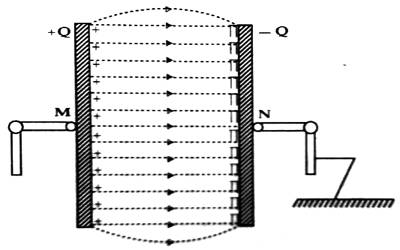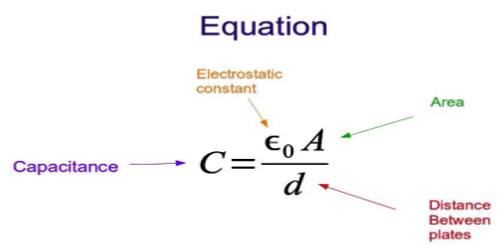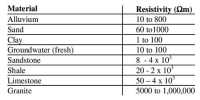Capacitance of Parallel Plate Capacitor or condenser
Capacitance is the ability to store electrical energy. Almost all things, including you, can store some electrical energy and therefore have capacitance. When you rub your feet across a carpet, charged particles called electrons can be transferred from the carpet to you.
Description: It consists of two metallic parallel plates. These are respectively M and N [Figure]. The plates remain separated by a small distance. Between the two plates air or any other insulating medium, e.g., paraffin, glass, ebonite, mica etc. are used. Besides, plate M is connected to an insulated rod and is kept isolated from the ground and plate N is connected to the ground.
Working principle: Let the area of each of the two plates be A, the distance between the plates be ‘d’ and the medium is air. Now, if + Q amount of charge is given to plate M, the lines of force originating from M will terminate to the nearby grounded conductor N. Due to this electric induction will be maximum and the induced negative charge on the inner surface of the plate N will be equal to the inducing positive charge of M. Since the plates are very close to each other, so lines of force coming out perpendicularly from the plate M will be parallel to each other and will terminate normally on plate N. The electric field between the plates will be approximately same everywhere.

Again, since potential of the grounded plate N is zero, so potential of M may be considered as the potential difference between plates M and N. It is seen by necessary calculation that the capacitance of the parallel plate capacitor is,
C = εA / d
and in air medium capacitance, C0 = ε0A/d.













